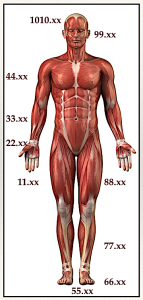Acupuncture Research and Bridging Biomedical Findings with the Wisdom of Traditional Systems
PORTLAND, USA, June 3, 2021 /EINPresswire.com/ -- The Society for Acupuncture Research will host a virtual conference from June 14 - 17, 2021. The theme of the presentation is Pandemics, Pain & Public Health: Roles and Relevance of Traditional East Asian Medicine. As part of the conference James Spears of the Integrative Healing Society will offer a poster presentation entitled The Myofascial Anatomy of Meridians, Tung’s Points and their Role on Future Research.
Biomedical findings are confirming many of the benefits of acupuncture therapy, and much is already known about the role of the nervous system in modulating therapeutic responses. While a neurological model for acupuncture assists doctors in many ways, a myofascial framework is necessary for understanding the structural and mechanical benefits of acupuncture. Various researchers from different fields are discovering that a useful model for future studies consists of three major areas for consideration:
1. Neurological (Electrical)
2. Myofascial Structures (Mechanical)
3. Biochemical (Chemical)
Scientists have also identified several challenges from past acupuncture research studies involving specific point functions and sham acupuncture. One inherent problem with traditional concepts is that any given acupuncture point will include numerous point specific functions. While some of these functions can be understood according to neurological and chemical responses, many specific point actions cannot be explained in this way. However, researchers are finding that some of these specific point functions can be interpreted through a fascial perspective. Adopting a myofascial model also lends insights into using acupuncture for structural disorders such as pelvic and shoulder tilts, rotations in the head, shoulders, torso, and legs.
The myofascial model also helps researchers to elucidate some of the problems found in testing traditional points against sham points. In these studies the influence of specific nerves needs to be controlled for, as well as the myofascial chains. If points being tested against each other are in the same body region, myofascial plane, and are stimulating the same nerves, we would expect a similar result between sham and traditional points. However, if tested points vary in the nerve pathways, body regions, or fascial lines, then we can expect a different result from the needles. Future research will need to account for controls in the myofascial chains, and the way they contribute to mechanical and structural changes.
Also lending support to future research is a system of acupuncture that comes from Taiwan known as Master Tung’s acupuncture points. These points are unique because they are numbered differently that the traditional meridian points such as PC 6 and LI 4. In the Tung system points are numbered according to the body regions they are located in. This classifies points based on whether they are in the hands, forearms, upper arms, feet, legs, thighs, etc. This is important for clinicians and researchers to understand, because points in similar regions will often share similar effects. For instance, points in the hands and feet are especially effective for disorders of the head and face, likely because of the high concentration of nerve fibers in the hands and feet.
This Tung system of numbering also helps shed light on the challenges found between testing sham points against traditional points, and assists in integrating neurological and myofascial models. This system is important for both doctors and researchers, as it helps them to understand the physiological mechanisms of acupuncture. Tung's system is also known to be highly effective, uses fewer needles, and often uses points in dense areas of connective tissues.
Learn more about acupuncture research, medical acupuncture, and Tung's points at the Integrative Healing Society.
James Spears
Integrative Healing Society
email us here
+1 415-367-3610
Visit us on social media:
Facebook
Twitter
LinkedIn
Legal Disclaimer:
EIN Presswire provides this news content "as is" without warranty of any kind. We do not accept any responsibility or liability for the accuracy, content, images, videos, licenses, completeness, legality, or reliability of the information contained in this article. If you have any complaints or copyright issues related to this article, kindly contact the author above.

